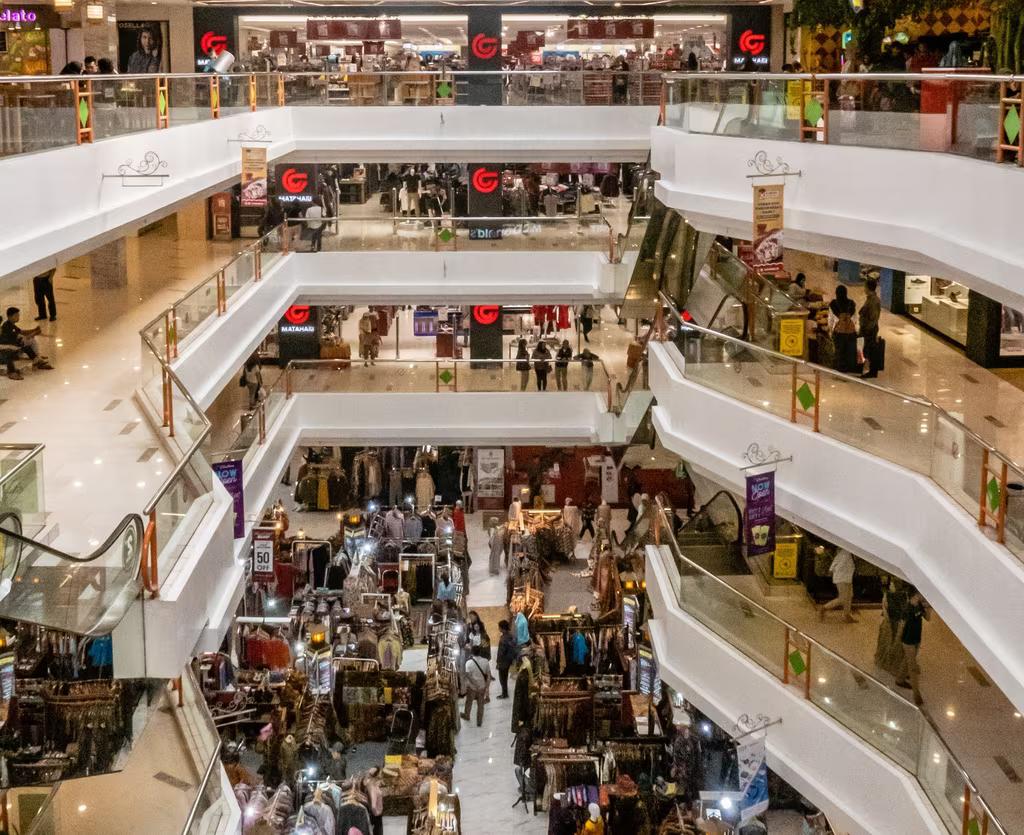The announcement in late May 2023 by the Reserve Bank of one final 25 basis point hike to the official cash rate (OCR) signalled that it felt it has done enough to cool demand and bring inflation pressures under control. Indeed, the Bank forecasts inflation to moderate to below 5%pa by the end of 2023 as rapidly higher debt-servicing costs force households to make difficult decisions over where to spend their money.
Recent retail trade data from Stats NZ illustrates what a slow down in household spending really looks like, and which areas of the economy are taking the hardest hit.
Spending more and getting less
Core retail sales volumes, which strips out the more volatile fuel and motor vehicle retailing and adjusts for inflation, have been trending down for over a year. In the March 2023 quarter, core retail volumes were down 4.6% from their December 2021 quarter peak (seasonally adjusted). In the same period, the value of quarterly core retail sales climbed 7.1% (see Chart 1). These figures show the central phenomenon happening now in the retail space: consumers are spending even more dollars at the till, but getting fewer actual goods and services than they did last year as the spending bang-for-buck erodes.
The Stats NZ retail data also revealed that industries selling more discretionary goods are seeing the largest downturns in volumes (see Chart 2). Electrical goods took the largest hit, falling 30% peak-to-trough between the December 2021 and March 2023 quarters, followed by non-store retailing (20%), hardware supplies (20%), recreational goods (12%), and furniture and homeware (12%).
Sales volumes in food and beverage services (think cafes, bars, and restaurants) and accommodation have been supported by the return of international tourism, rising 27% and 16% over the same time period. These spending volume increases come despite price increases of 8.8%pa and 23%pa for these industries respectively. The nearly 20% rise in department store spending is at odds with what we’d have expected, but changes in the classification of electronics and department store spending may be distorting trends – combined electronics and department store spending was 12% lower over the comparison period.
The rise in clothing and footwear spending has been a continued trend over the last few years, perhaps highlighting that, although these items are less essential than food and fuel, they’re more essential than electronics, DIY, and other spending options.
These industries are not necessarily those with the most drastic price pressures. For example, hardware supplies inflation eased to 6.9%pa in the March 2023 quarter, and electronic goods inflation was just 0.9%pa (although some of this lower increase in prices will be due to quality adjustment for better electronics goods). Price increases have been much more acute in supermarkets (11%pa), and although the price of fuel has declined from the March 2022 quarter, there will be an increase of almost 30c/L from July onwards due to the resumption of the full Fuel Excise Duty.
Because of the essential nature of these goods, demand for food and fuel is relatively price inelastic, meaning households are less inclined to change the actual amount that they purchase when the price increases. On the other hand, households are more able to just hold onto an old couch, or defer purchasing a new computer, when times are tough. By the same logic, as households roll onto higher fixed-rate mortgages, further limiting weekly budgets, consumption of less essential items like electronics, hardware, and homeware is first to be cut.
Online retail more popular over time, taking a short-term hit
Although inflation and interest rates have been the primary influence on consumer spending trends recently, another large shift has been the increasing popularity of online shopping. Chart 3 shows that online-only spending had been growing as a proportion of total retail spending since before the pandemic. However, after jumping to 18% in September 2021 during the second national lockdown, the online proportion of retail has remained at elevated levels.
Having averaged around 13% of spending over the two years before COVID-19, online spending spiked to 23% during the original Level 4 lockdown, but then retreated to more familiar territory. Since the start of 2022, online spending has made up around 16% of total spending according to Datamine’s Retailwatch data.
Industries with the largest proportion of online retail in the six months to April 2023 were travel and accommodation (60%), recreation (48%), furniture and homeware (23%), clothing and footwear (18%), and books and stationery (16%).
Despite an overarching trend of increased online retail, online-only sales have borne the largest declines as we enter a more subdued period of consumer activity (see Graph 4). In most industries, the level of online spending in the three months to April 2023 declined from the same period in 2022. The largest declines were in books and stationery (down 38%pa), furniture and homewares (36%pa), liquor retailing (36%pa), clothing and footwear (32%pa), and health goods and services (24%pa). Note that these figures are not inflation adjusted, which means these declines will understate the drop in purchase volumes.
Apart from travel and recreation, which are bolstered by the return of tourism, the industries where online retail declined the most are those that sell more discretionary items. This trend is especially concerning for books, clothing and homeware retailers, which have a high proportion of online retailing.
Although the rise in travel and accommodation spending is considerable, it is also coming off a low base, considering travel activity in early 2022 wasn’t yet fully operational. To put the nearly 68%pa increase of this group in context, online spending for travel and accommodation in the three months to April was only 36% higher than pre-pandemic levels, compared to a 60% rise in total online retail spending.
Looking at the data in a different way supports the view that online spending is typically more discretionary than instore. Online spending has declined much more severely than instore across most industries. Overall, total online retail spending increased just 5.0%pa in the three months April, compared to an instore spending increase of 7.6%pa.
Between declining retail volumes, higher lending arrears, and weak growth in online spending, there is clear evidence that households’ shopping appetite is easing as budgets become tighter. Electronic goods, hardware, homeware, clothing, and books retailers in particular are navigating the challenge of high input costs and a consumer base that reacts strongly when those costs are passed on.
We expect that household spending growth will turn negative over 2023 and gradually begin recovering in late 2024. The full effect of higher interest rates has yet to work its way entirely through the economy, as labour market indicators are still running hot. However, given the Reserve Bank’s announcement that the OCR has now peaked, risks around the severity and length of the retail spending downturn might be more finely balanced.

















